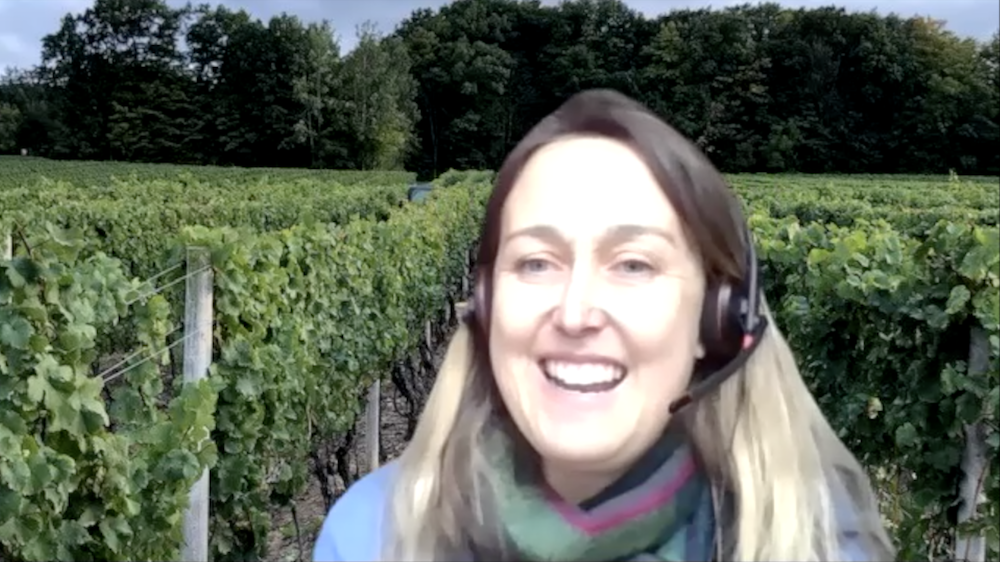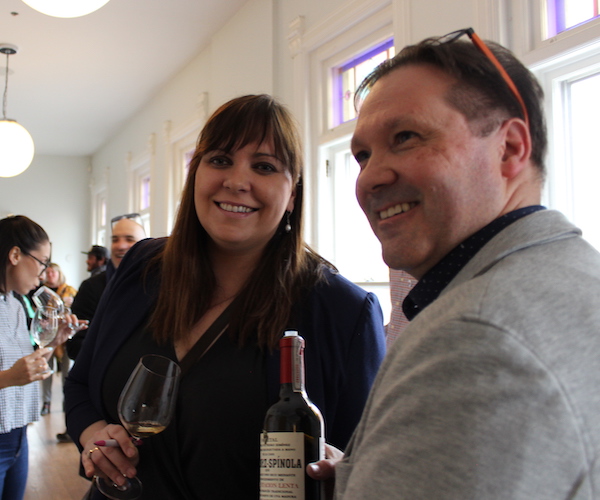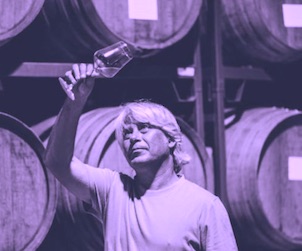We have an idea now of the bratty cousin to Vitis vinifera. Notably, acidity, a striking ‘foxiness’ (‘foxy’ being the smell of a fur coat, or wool in the rain, and a common note spotted on many hybrid wines), and an innate juiciness. As someone who enjoys a vast bouquet of wines on a regular basis (it’s a living), I often find myself begging for something “new”. Yes, you can get tired of wine. The only way to genuinely become tired of wine is by sipping a sea of taste profiles that taste like running through a hall of mirrors. You will find yourself searching for more. Hybrids are a really great way to find that “new” and “more”. Traits that have been hushed by wine critics and winemakers alike now take North American terroir into the spotlight. Our own identity in the wine world (culturally and environmentally) could be just over that broken limestone hill.
For our purposes, I will be focusing on Ontario hybrid wines, but since there are distinctive hybrid wines being made in other provinces, I will put a list of wineries worth checking out at the bottom of the article.
Ontario’s most illustrious hybrid grapes would be the deep purple grape variety Baco Noir and the bright, white Vidal. Baco Noir has been branded as an inky, quirky, relative to Gamay or Pinot Noir (albeit no relation: Baco Noir is a hybrid produced by Francois Baco by crossing the French Folle Blanche and an unknown Vitis riparia grape). True to its hybrid nature, its palate is very bright. There is a sharp, tangy dark fruit note, like rolling overripe black cherries in a little citric acid. On the nose, those deep, dark notes come through with a touch of the classic mink coat aroma.
Baco is also an acutely tinted red wine. I’ve processed this wine before while making the uncommon “Baco Nuvo’” with Trail Estate in 2017 (a Baco noir processed like a Beaujolais Nouveau), and it took 3 days to get the magenta stains off of my hands. Baco is often produced at larger-scale Ontario wineries such as Peller Estates, Henry of Pelham, and Sandbanks. There’s a bit of a cult following, and often these conventional wineries make a sweeter rendition of the variety in an attempt to mask the high acidity and natural gaminess of Baco (a common note on red hybrids). I find this to create a product I’m not all that fond of, but if you find one made by a smaller winery using low intervention practices, you might just find the elusive “elderberries-in-a-rainy-november-forest” palate that I search for in Baco Noir.
On the very opposite end of the wine palate spectrum, we find Vidal. Vidal was first created by crossing Vitis vinifera Ugni blanc (aka Trebbiano, and also the grape most commonly used to make Cognac and Armagnac) with the hybrid Rayon d’Or. In Canada, you might recognize the Vidal grape as our leading star of Icewine. It can withstand great levels of cold, which is especially useful in the Prince Edward County area of OOntario,which can get notably colder than Niagara.
Introduced to our soils as early as the 1940s, Vidal is popular and widely grown across Canada in British Columbia, Quebec, and Nova Scotia. Outside of ice wine, it is commonly used to make delightfully acidic sparkling wine and is an excellent variety to use for pet-nats, as its acidity keeps the pet-nats from coming off too juicy or lacking structure. Lighthall Vineyards (which also makes to-die-for sheep cheeses) uses the grape to make their celebrated signature ‘Progression’ charmat method sparkling. One of the more impressive and approachable sparkling wines in our province, Progression is like burrowing your face in grapefruit and granny smith peels. It’s invigorating and energizing.
Another delightfully peculiar rendition of Vidal sparkling is Maenad Wine Co. and their pet-nat series that includes additions of native fruits, herbs, and even spices. All three pet-nats are Vidal-based, one has the addition of peaches and sumac, one wild blueberry and sage, and the newest addition, Concord grape and tarragon. Yvonne Irvine’s pet-nats not only evoke the natural tartness of Vidal, but also showcase other visceral smells and flavours of Ontario in a method that has not been seen here in this province before. Personal (and sort of professional) opinion, but the Concord grape and tarragon pet-nat may be my current favourite wine in Ontario. [Woah! – Ed.]
There have also been macerated Vidal wines on the market (yes, that is orange wine) that flirt with underripe tangerine and clover nectar notes. Southbrook vineyards, the first winery to receive both organic and biodynamic certification in Canada, has a skin fermented estate Vidal wine. With 22-days on skins, we get a breeze of stone fruits, marmalade, grapefruit, and a balanced tannin to maintain a great structure. This would be my favourite rendition of macerated Vidal.
There are several other hybrid grapes that are worth exploring if you get the chance to enjoy them. The exciting part of enjoying hybrids is their rarity (for the time being), and it feels like collecting little treasures.
Ontario’s bounty of hybrids includes official (and not-so-official) wineries in the southern area. Concord, Vidal, and Baco Noir take up most of the pie, but two adventurous winemakers are making hybrids among the classics and letting Ontario terroir take centre stage.
I’ve had the pleasure of enjoying (via trade, because ick gross capitalism) the wines of budding winemakers Aiden Gunter and Jonas Bonetta, who are focused on hybrids in a brilliant and vibrant way. Aiden, an independent and exciting artist of wine, broke out with Breaking Point. Working on a small vineyard near Ottawa with organic practices, Breaking Point was my first experience with a truly local hybrid wine. Aiden produced a vibrant red/white blend with Frontenac noir, Sabrevois, and a sneaky white grape varietal. It was both deep in black fruit flavour and colour but low in tannins and benefited from a light chill. Easily the most crushable red of the summer. Cranberry, thyme, wildflowers, and cherries. You’ll want to keep your ears to the ground for his next project as he grows within the industry.
Jonas Bonetta, of Evening Hymns fame, started working on wines, both Vinis vinifera and hybrid, a few years ago on his property. His project, Subterranea, is a true testament to winemaking as an extended form of emotion and art. He was gracious enough to share with me three of his wines, but Maeve, a Marquette wine (red), stood out to me as the most heartfelt. He shares the story behind naming the bottle Maeve (for his niece) and how he happened to coincidentally bottle it merely an hour before her birth. Deep, inky red that tastes like the night sky and crushed blackberries in your palm. Hybrids are an exciting art form that feels more human than wines I’ve had before.
Outside of Ontario, it’s worth noting that other Canadian regions have a more concrete focus on hybrid wines. Ontario tends to feel the pressure to present Eurocentric and crowd-pleasing wines, while other provinces (except British Columbia) manage to escape that dynamic. Quebec and Nova Scotia winemakers have always been more hybrid focused. Nova Scotia even has a hybrid grape that is signature to their province: L’Acadie Blanc. Not unlike Sauvignon blanc, L’Acadie is medium bodied and bright with herbaceous and citrus notes, a perfect wine to pair with most coastal delights. Quebec is releasing easily the most exciting wines in Canada (again, this is my personal opinion, but I find their region extremely innovative ) and has focused on hybrids for decades.
I’ve never anticipated the Canadian wine horizon as fervently as I do now. The opportunity that Ontario (and Canada) has to create a space for our own terroir with hybrid wines puts us in a unique position. I encourage you to get excited and find all the hybrids you can. Lavish in the knowledge that there are environmentally conscious wines outside the proverbial norm, with fascinating (and occasionally challenging) textures, bodies, and palates.
In Part 3, we will discuss the ongoing challenge of getting hybrid wines the access to the public they so desperately need and how VQA and LCBO affect their presence in the Ontario wine horizon. Below, I’ve linked a few vineyards worth supporting for their efforts in hybrid (and incredible) wines. As always, Ontario wineries can ship to your door. Until next time!
Nova Scotia
Quebec
Ontario







